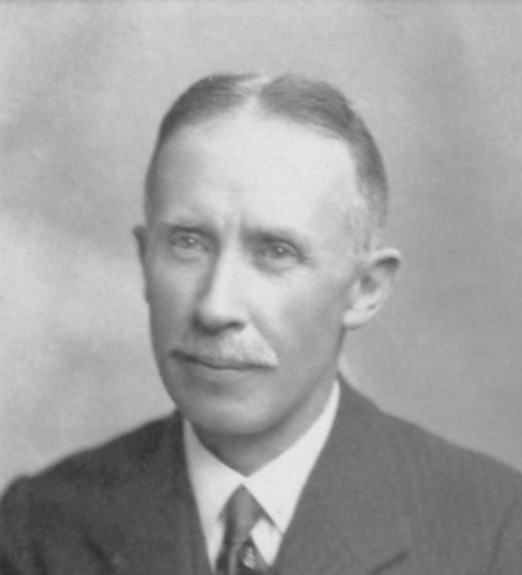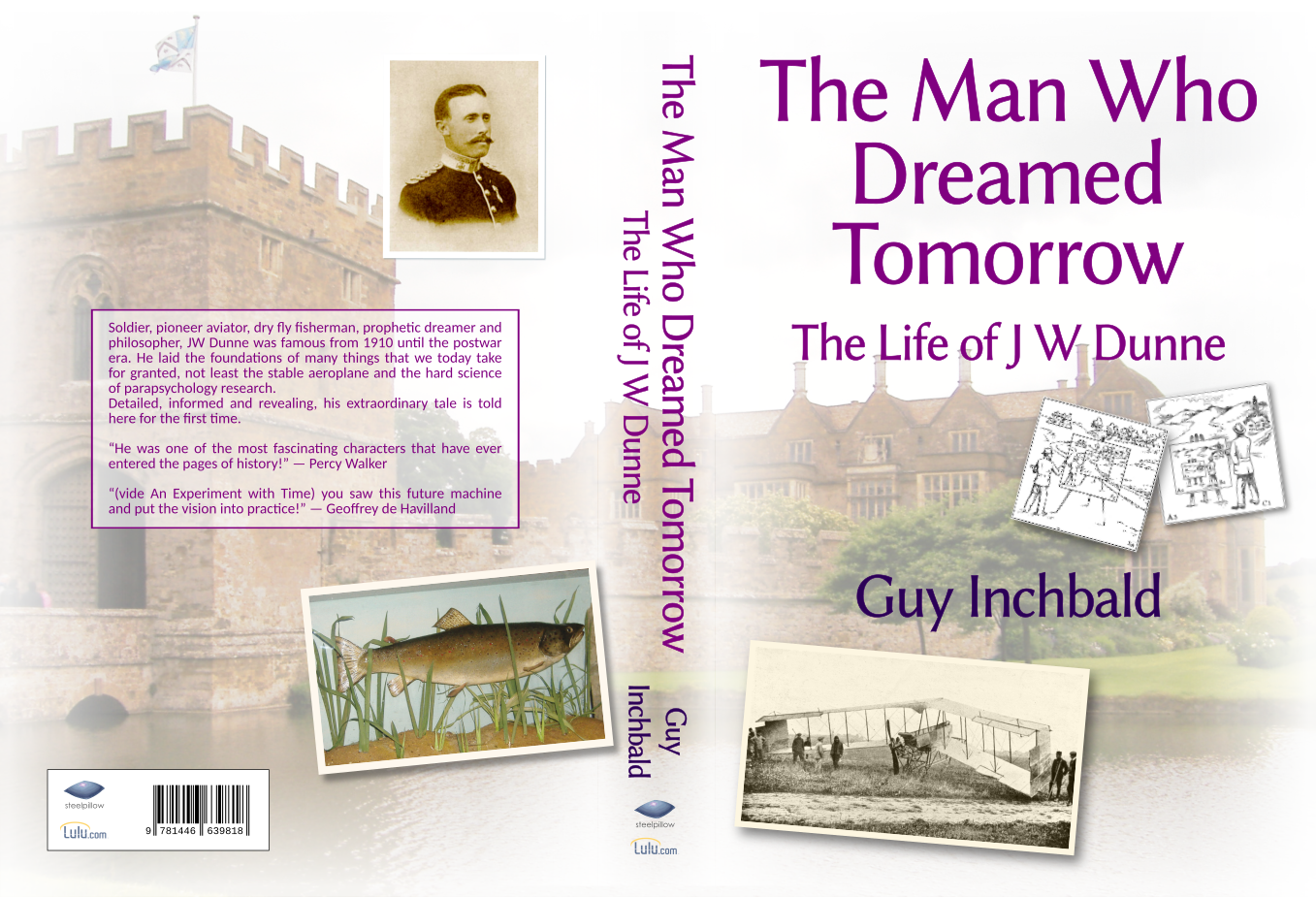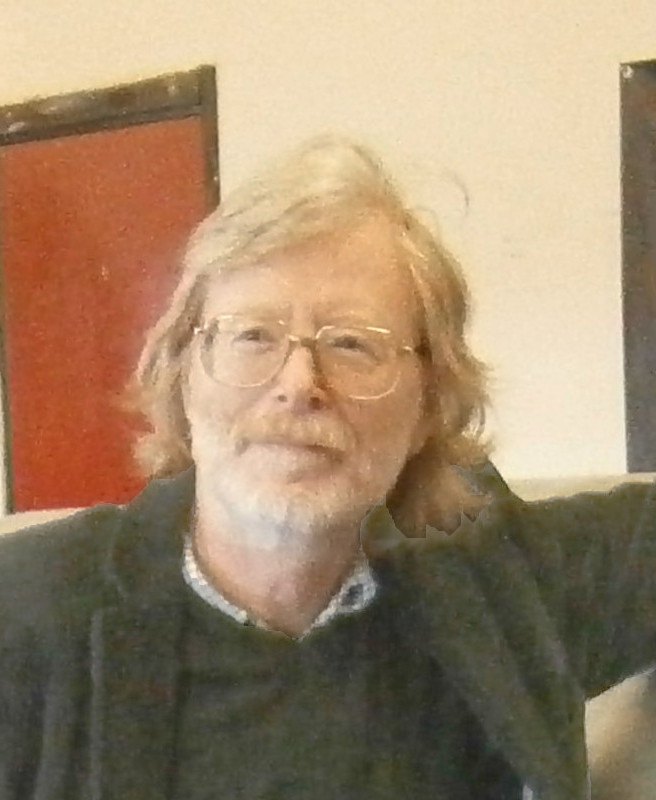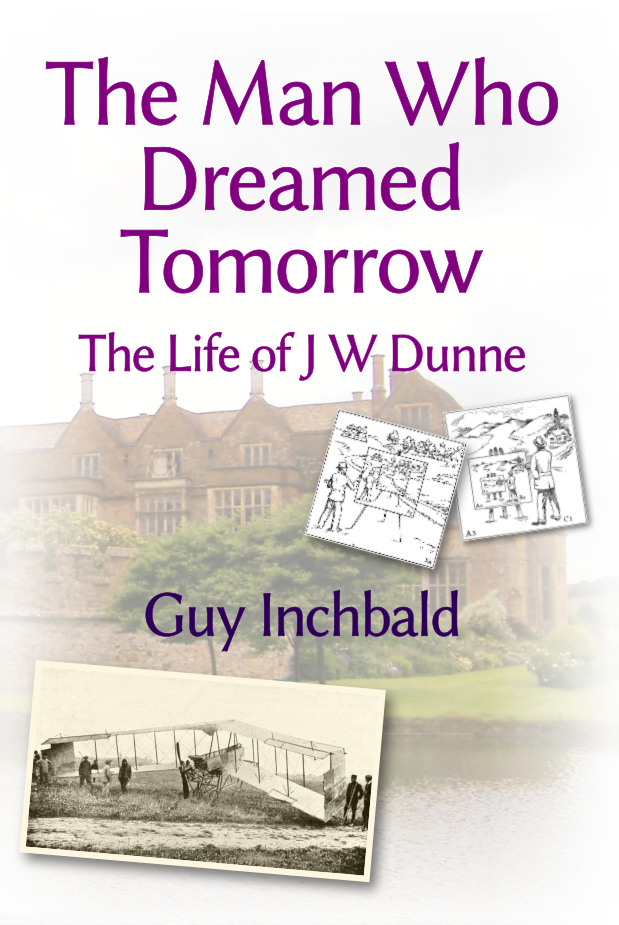The Man Who Dreamed Tomorrow
The Life of JW Dunne
It's Here!
Buy now from Lulu.com
Paperback. 9 in x 6 in (23 cm x 15 cm). 560 pages. ISBN 978-1-4466-3981-8
Published by steelpillow in association with Lulu.com.

Soldier, pioneer aviator, dry fly fisherman, prophetic dreamer and philosopher, JW Dunne was an extraordinary and fascinating character. He laid the foundations of many things that we today take for granted, not least the stable aeroplane and the hard science of parapsychology research. Famous from 1910 until the postwar era, his seminal work on precognitive dreams, An Experiment with Time, became a bestseller. Many of his achievements have been lost to history, yet their stories form an astonishing tapestry of interweaving threads which changed much of the world around us today. He befriended greats such as HG Wells, lived much of his life in a moated castle, sent a pamphlet to Hitler to try and prevent the Second World War, contemplated founding a new religion. His work on the stable aeroplane was perhaps the most enduring, and yet the least remembered, of his achievements.
Detailed, informed and revealing, his extraordinary tale is told here for the first time. This fascinating and highly readable account was made possible only by the Science Museum's recent acquisition of his vast professional archive. An extensive bibliography and index round it off for the serious historian.
- “He was one of the most fascinating characters that have ever entered the pages of history!” — Percy Walker
- “(vide An Experiment with Time) you saw this future machine and put the vision into practice!” — Geoffrey de Havilland
Availability
Currently only available to order print-on-demand from Lulu.com. Over the next few weeks it will be made available to order worldwide, from outlets like Amazon, Barnes & Noble, and all good bookstores.
How The Book Came to Be
Until now, precious little was known about John William Dunne beyond his own writings and a few short essays. A remarkable chain of coincidences, which there is no room to recount here, started me off on this project and presently led, via a wildly unlikely encounter with the museum curator who had just cut the deal, to the Science Museum’s imminent and as yet unconfirmed acquisition of Dunne’s professional papers. I had to wait many months while the deal was concluded, the collection fumigated and the endless boxfuls made available. This book is the first substantial fruit of that acquisition.
The archive is a historical treasure trove. Dunne had kept almost everything. Such a wealth of startling revelations poured forth that I struggled to keep the book manageable. Despite those ten years of effort, much of the finer detail has had to fall by the wayside.
As the story unfolded, many of the apparently arbitrary twists and turns in one area of his life would be revealed as intimately related to goings-on elsewhere. For this reason the book takes a more or less chronological approach, bringing these interweavings to the fore rather than dealing with each aspect of his life in its otherwise inexplicable isolation.
It soon became painfully clear that the sparseness of the public record had caused a good many myths to grow up around Dunne over the years, in desperate attempts to fill in the gaps and find something – anything – to say. Revelation after revelation poured cold water on them, the truth proving far more dramatic and electrifying.
But when it came to illustrations, the museum proved hopeless. Among the archive are a dozens of historically significant, striking and unique images, from drawing sets of his aeroplanes to historic letters to photographs of him larking around with HG Wells. His story would need perhaps three or four dozen to do it justice. But the museum has, in its infinite wisdom, chosen a somewhat unhelpful approach to image licensing. For sufficient images, this struggling old-age-pensioner is expected to pay several thousands of pounds in advance, in image scanning and licensing fees. No recovery based on post-sales royalties, oh no. The profit has to be up front. They received a £15,000 grant towards buying the archive, on the explicit condition that they would make it available to the public. Here am I trying to do just that, but instead they prefer to set an insurmountable obstacle in the way. Sadly, this edition is not illustrated.
The title comes from Geoffrey de Havilland's remark quoted above, written in a letter to Dunne shortly after the first flight of the tailless swept-wing DH 108 "Swallow" jet. And thereby hangs a poignant tale of high tragedy, concerning both men's aeroplanes and precognitions, which you may find in my book.
Cover Design
Book covers are always a thorny issue. How much do they really matter? Anyway, I wanted it to capture something of the flavour of Dunne's character. A dreamy and indistinct background seemed appropriate, with islands of sharp focus representing his main interests. I did not want to go so far as traditional Taoist painting, which leaves a blank white background of river mist; a few filters imitating the old vaseline-on-the-lens trick would be more appropriate.
While visiting Broughton, I had taken a photo of it from a field on the far side of the moat. It caught the splendour and established traditions of the aristocracy well, with a military touch in the drawbridge and battlemented gatehouse. There was even a flag flying. It was the backdrop to Dunne's adult personality and ethos, both physically and metaphorically. The filters even introduce that air of fading splendour which so pervaded the breakup of Empire: are those brick walls really still as substantial as the day they went up?
Sharper images scattered about the place, and highlighted by drop shadows, bring Dunne's intellectual pursuits into focus.
How to depict Serialism? I came to the same answer as the director of Escape from the Planet of the Apes (it appears briefly on a video monitor), which was the regressive artist painting images of himself to infinity. But which to choose, the first one, or the later one which he drew in mirror image? Both juxtaposed of course, for Dunne was full of little contrasts and inconsistencies.
And which aeroplane? The one he had dreamed as a child seemed appropriate. Like its creator it had a turbulent history, built as the D.5 and the first certified stable machine, rebuilt as Carden's D.8, refurbished and re-engined as Félix's D.8 "Nieuport-Dunne", and in this form hitting the world's headlines for its solidity and bravado. Like An Experiment with Time it had undergone many updates before the last in the series appeared in the care of the French. Perfect!
Less high-profile, and hence for the back cover, were his politico-military endeavours and his fly fishing. The first is captured by a portrait in smart Military dress uniform - the only photo to be set carefully to attention. The second is the monster trout which Dunne hunted and caught with one of his flies, close by in the brook which feeds the moat, and which resides to this day in the castle.
Finally, there was the matter of colour for the text. It should conjure a feeling somewhere between reason and intuition, driven by a passion for both. Bold and strong, but not overpowering. Black or Navy blue felt too neutral, browns lacked passion and greens lacked energy. I hope you approve of my final choice.


Guy Inchbald has taken almost ten years to research and write this biography of Dunne. Lifelong aero and science enthusiast, sometime student of philosophy, marginally better amateur mathematician, professional non-specialist and scion of that same dying socio-military upper middle class which once ran an Empire, I feel more qualified than most to understand the man and his work and to tackle head-on the broad, eclectic intellectual challenge of getting under his skin, the better to tell his tale.
Updated 17 March 2024
